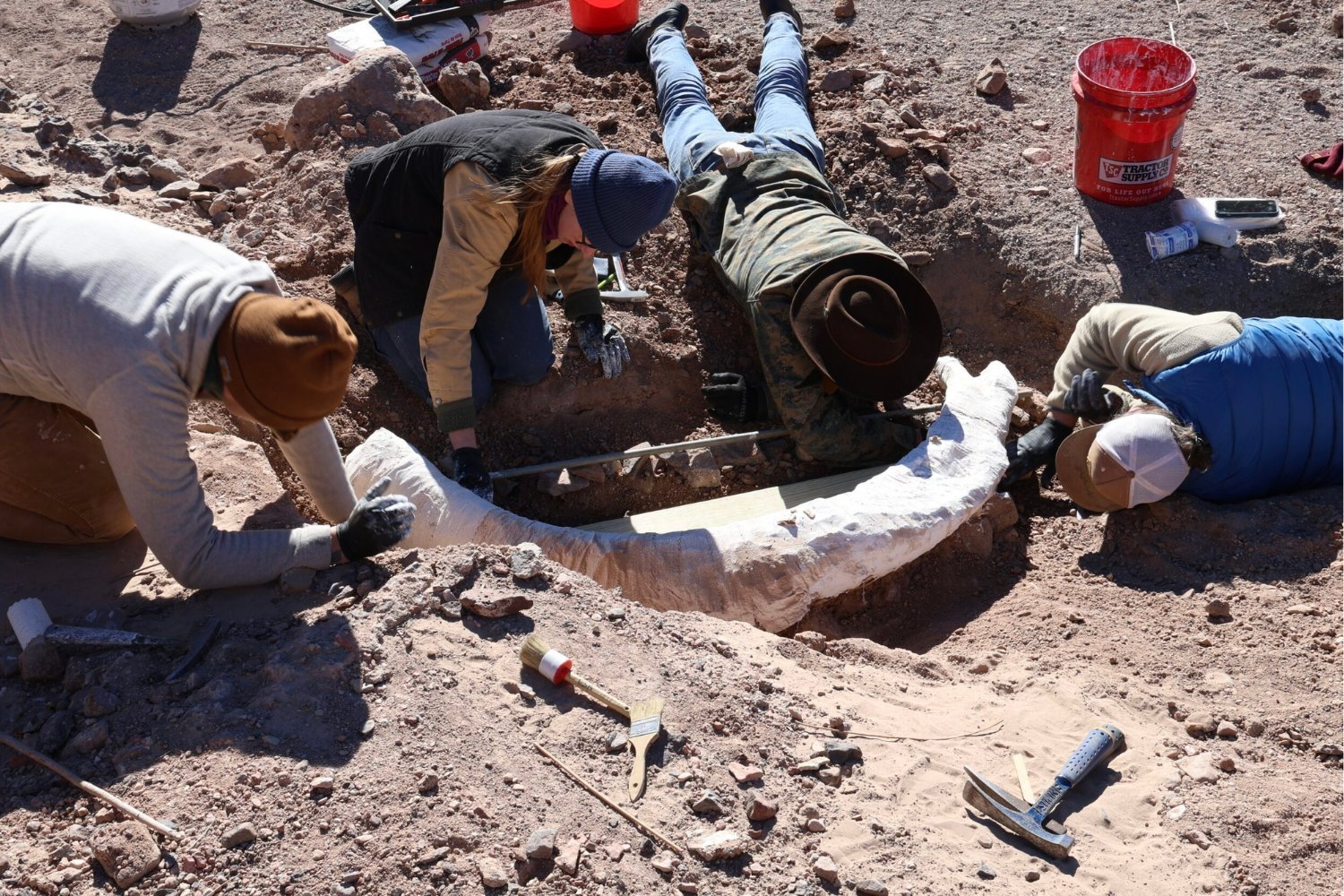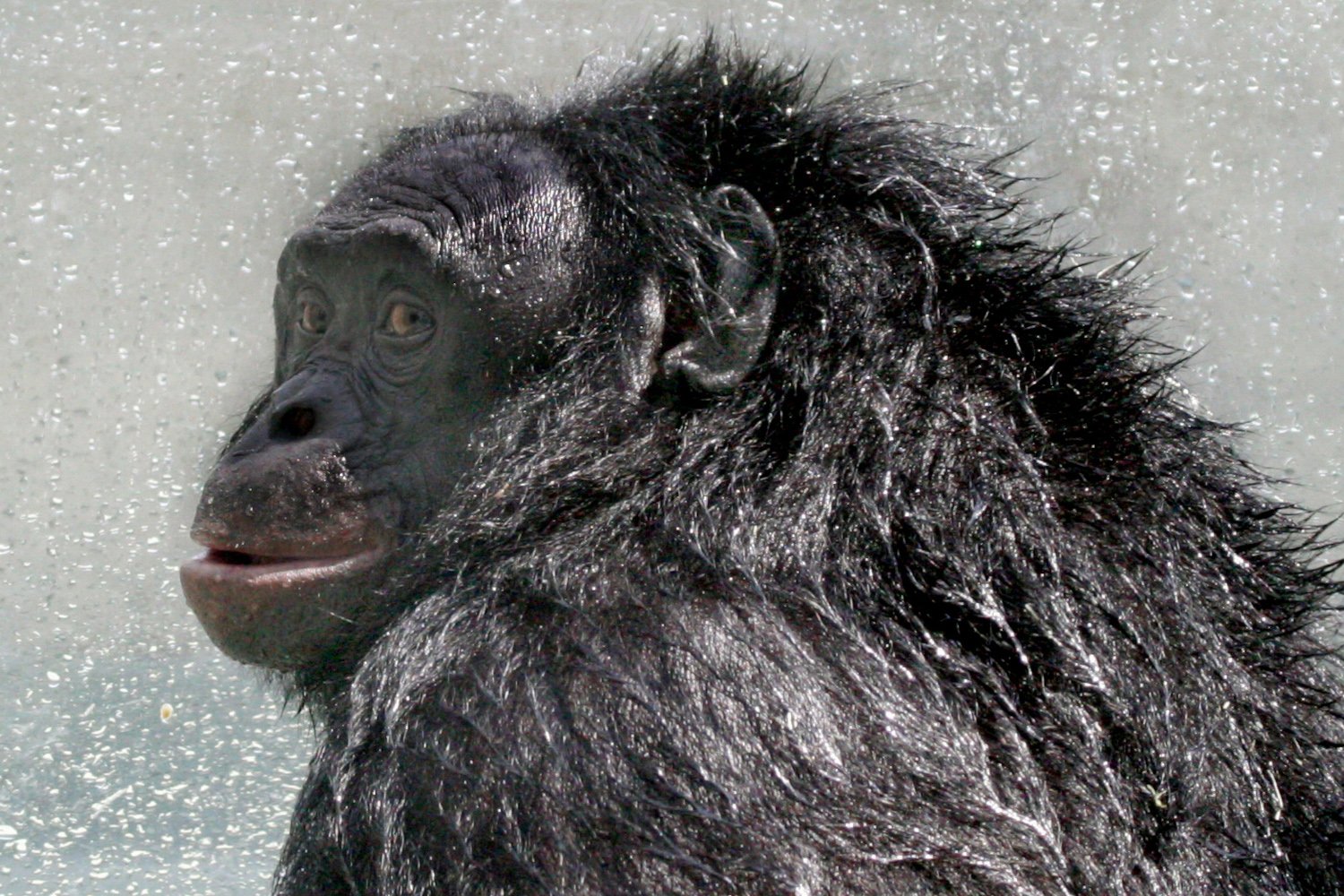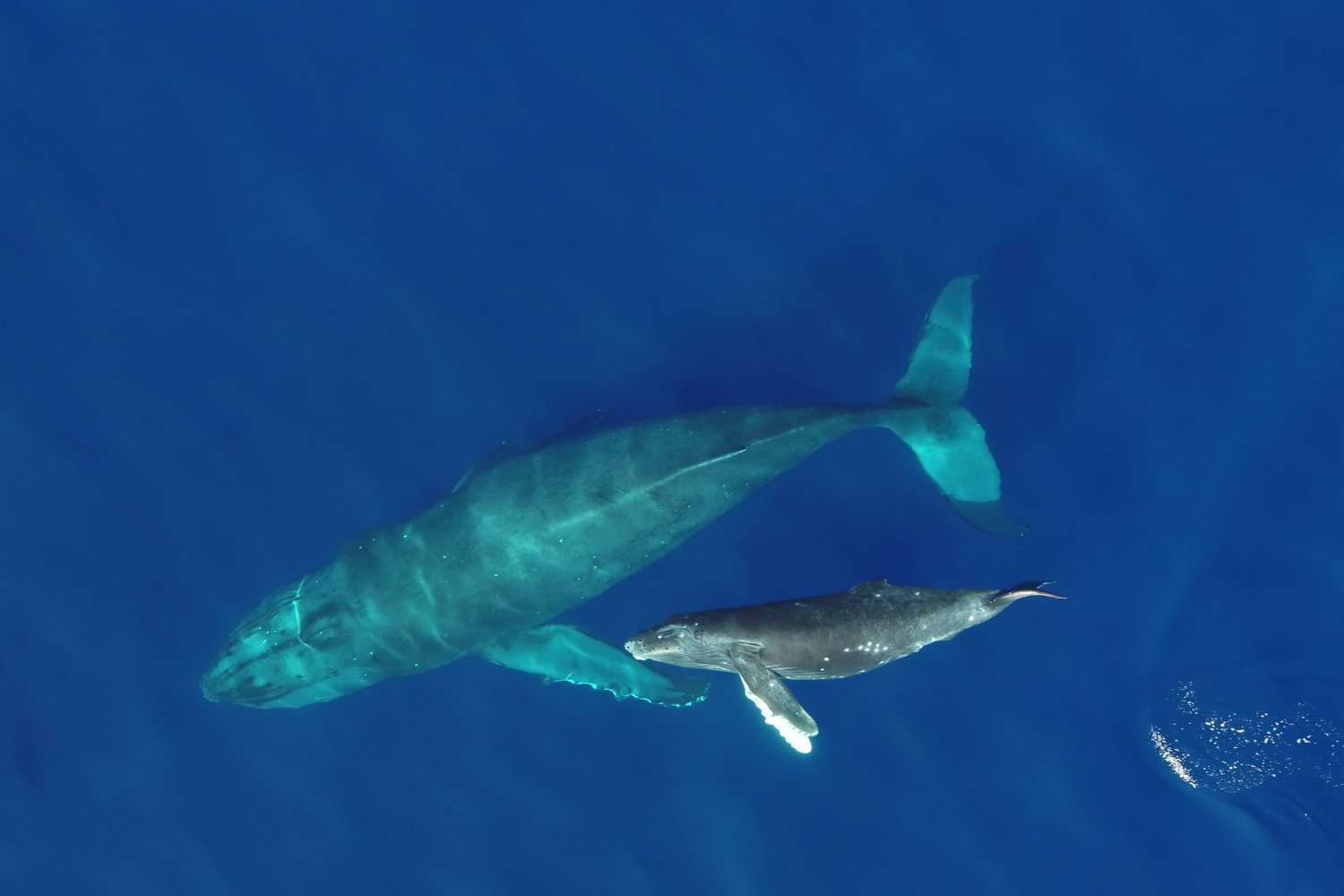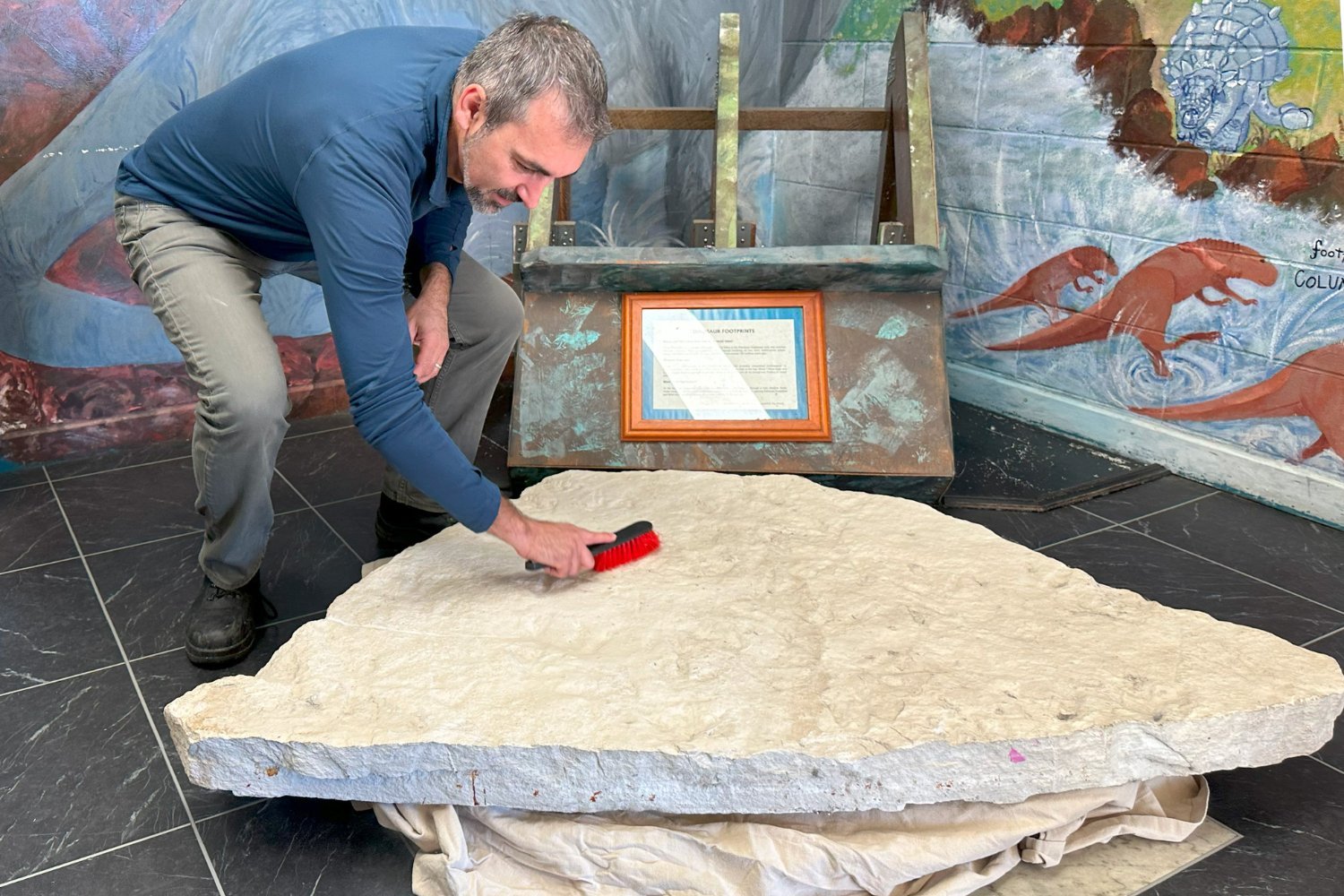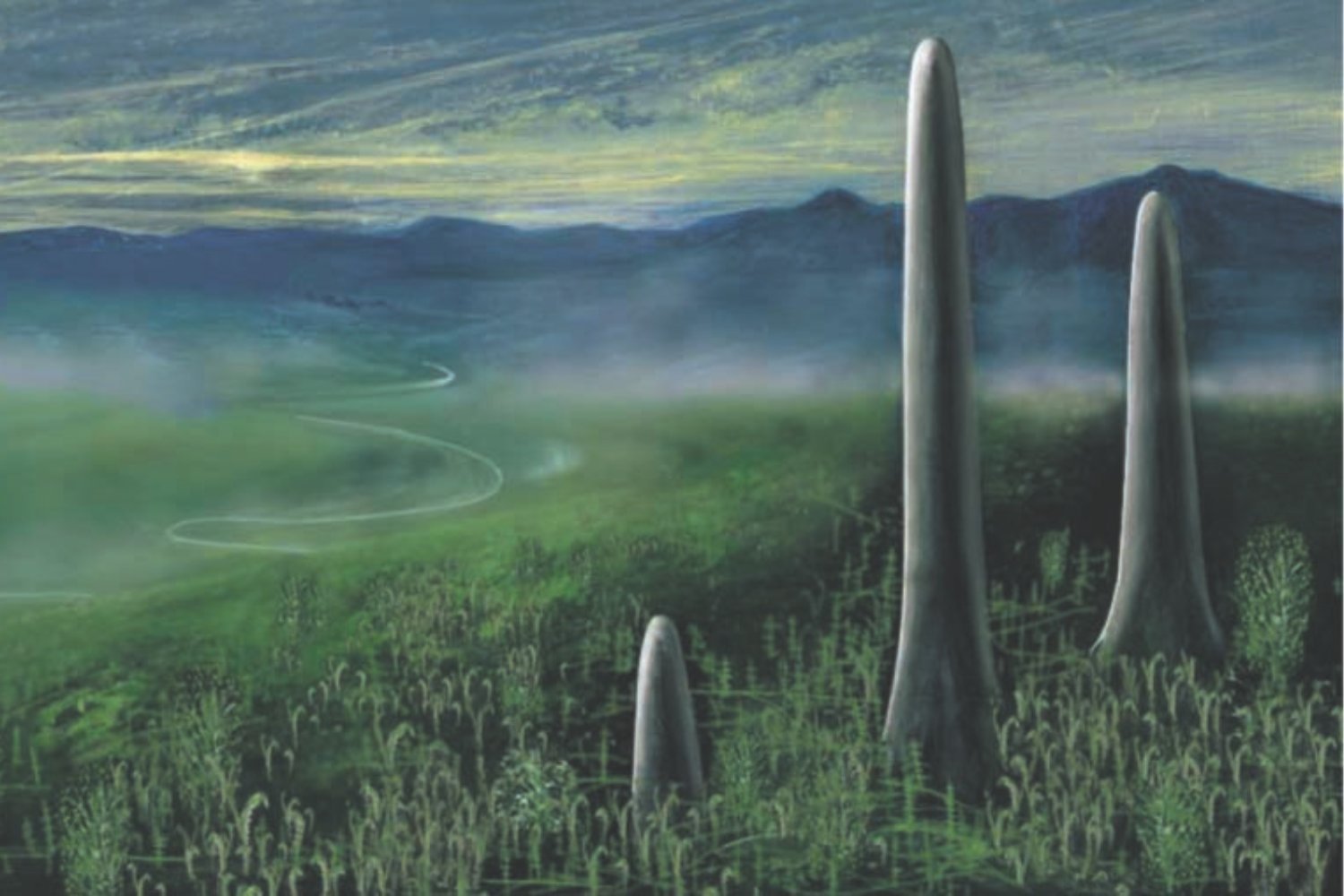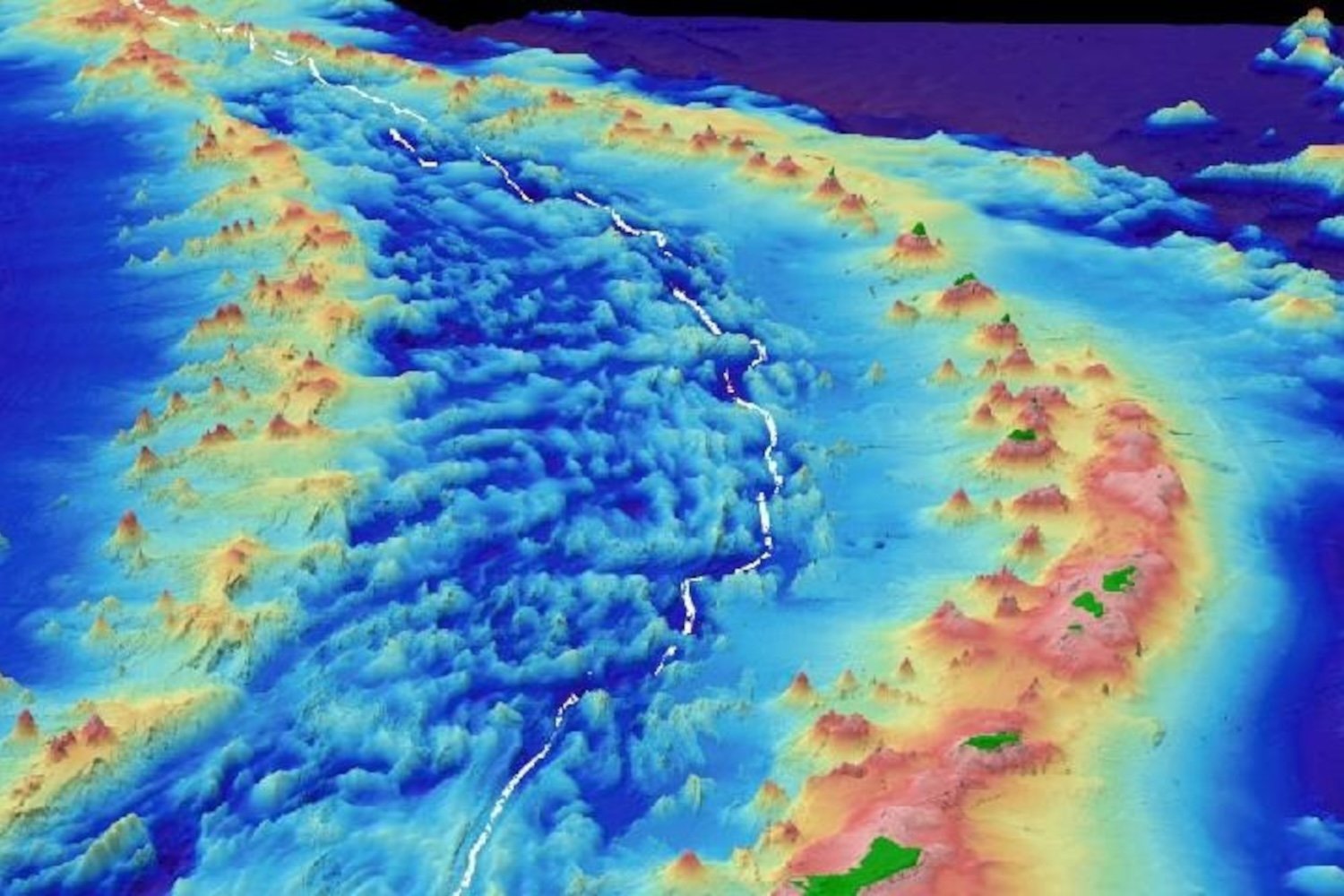A chance discovery by a deer hunter in West Texas has unearthed a rare mammoth tusk, offering a glimpse into the region’s prehistoric past. The remarkable find, initially mistaken for an old stump, has sparked excitement among researchers and ignited imaginations about the ancient giants that once roamed the land.
While hunting, the hunter spotted the unusual object nestled in a creek bed and, suspecting it might be a fossil, captured a photo. He then shared the image with O2 Ranch manager Will Juett, who initially remained skeptical. “I figured it was likely just an old stump,” Juett admitted in a statement released by Sul Ross State University, “but imagined how great it would be if he was right.”
The hunter’s intuition proved correct, and the discovery exceeded all expectations. Juett, realizing the potential significance of the find, contacted Bryon Schroeder, director of the Center for Big Bend Studies (CBBS), and archaeologist Erika Blecha. They, in turn, enlisted the expertise of Haley Bjorklund, a CBBS collaborator and University of Kansas graduate student specializing in environmental archaeology. Joined by two other anthropologists, the team assembled at the ranch to examine the object firsthand.
The researchers quickly confirmed the object was indeed a mammoth tusk, an exceptionally rare discovery for West Texas. “When they confirmed what they had uncovered, I couldn’t believe it,” Juett remarked. Disappointingly, the tusk was an isolated find, with no other mammoth remains discovered in the vicinity. Over two days, the team meticulously encased the tusk in plaster-covered burlap and constructed a support frame for its safe transport to Sul Ross State University (SRSU).
At SRSU, the researchers will conduct further studies on the tusk, including radiocarbon dating to determine the mammoth’s age. This technique measures the decay of radioactive carbon isotopes to estimate the age of organic materials. Schroeder noted a previous discovery of a mammoth tusk in Fort Stockton in the 1960s, which was subsequently the subject of a PhD dissertation. He highlighted that this new specimen is currently the only carbon-dated mammoth tusk from Texas’ Trans-Pecos region. “There was a big range of error [in carbon dating] back then,” Schroeder explained. “Now we can get it down to a narrower range within 500 years.”
While the specific species of mammoth hasn’t been confirmed, the tusk may have belonged to a Columbian mammoth, a relative of the more widely recognized woolly mammoth. These massive creatures could reach heights of up to 13 feet and weigh around 10 tons. Columbian mammoths once roamed across North America, including present-day Texas, before their extinction approximately 11,700 years ago, along with numerous other Ice Age mammals. The causes of this mass extinction remain a topic of scientific debate, with climate change frequently cited as a contributing factor, and human hunting potentially playing a role.
For Juett, the discovery evokes a powerful connection to the past. “Seeing that mammoth tusk just brings the ancient world to life,” he expressed. “Now, I can’t help but imagine that huge animal wandering around the hills on the O2 Ranch. My next thought is always about the people that faced those huge tusks with only a stone tool in their hand!” This remarkable find serves as a tangible reminder of the rich prehistoric history hidden beneath the surface of West Texas, waiting to be discovered.



